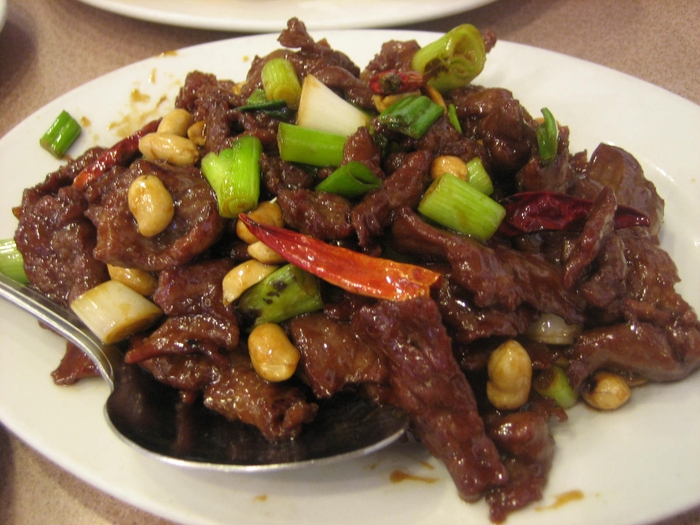- If you want to know the differences between the five main traditional Chinese dishes, [popup url=”https://www.grandpacooks.com/recipes/mongolian-sichuan-kung-pao-mandarin-hunan/”]CLICK HERE.[/popup]
- Kung Pao usually starts off with fresh, moist, unroasted peanuts or cashew nuts. These are often used instead of their pre-roasted versions. The peanuts or cashew nuts are dropped into the hot oil on the bottom of the wok first, then deep-fried until golden brown before the other ingredients are added.
Ingredients to feed 4 people
|
|
Step by Step
- Combine chili paste, soy sauce, sherry, rice vinegar, sugar and sesame oil.
- Place flank steak in a large resealable bag.
- Pour marinade mixture over top and refrigerate for one to eight hours.
- Remove flank steak from marinade and set aside.
- Pour marinade into a sauce pan.
- Add chicken broth, nuts and cornstarch.
- Bring to a boil then simmer until it thickens.
- Preheat grill.
- Cut bell pepper in half and remove stems, seeds and membranes.
- Brush with olive oil.
- Place flank steak on very hot grill.
- Grill for one minute per side.
- Reduce heat or move to a cooler section of your grill and continue grilling until cooked through (about 4 to 5 minutes per side).
- Grill pepper halves over medium heat for about 1 to 2 minutes per side or until browned.
- Remove steak and bell pepper from grill.
- Allow steak to rest for five minutes.
- Carve against the grain into thin strips.
- Cut bell pepper into thin strips.
- Place a portion of rice on a plate.
- Top with 1/4 of the flank steak and 1/4 of the pepper.
- Spoon sauce over top and serve.
Oh, one more thing…
- Click here to view excerpts from Kung Pao – Enter the Fist
- Although the dish is found throughout China, there are regional variations that are typically less spicy than the Sichuan serving.
- Kung Pao chicken is also a staple of westernized Chinese cuisine.
- The dish is believed to be named after Ding Baozhen (1820–1886), a late Qing Dynasty official, and governor of Sichuan Province. His title was Gongbao (Kung-pao).
CLICK HERE for a free sample copies of Grandpa's Cookbooks. © 2016, 2017, 2018.

